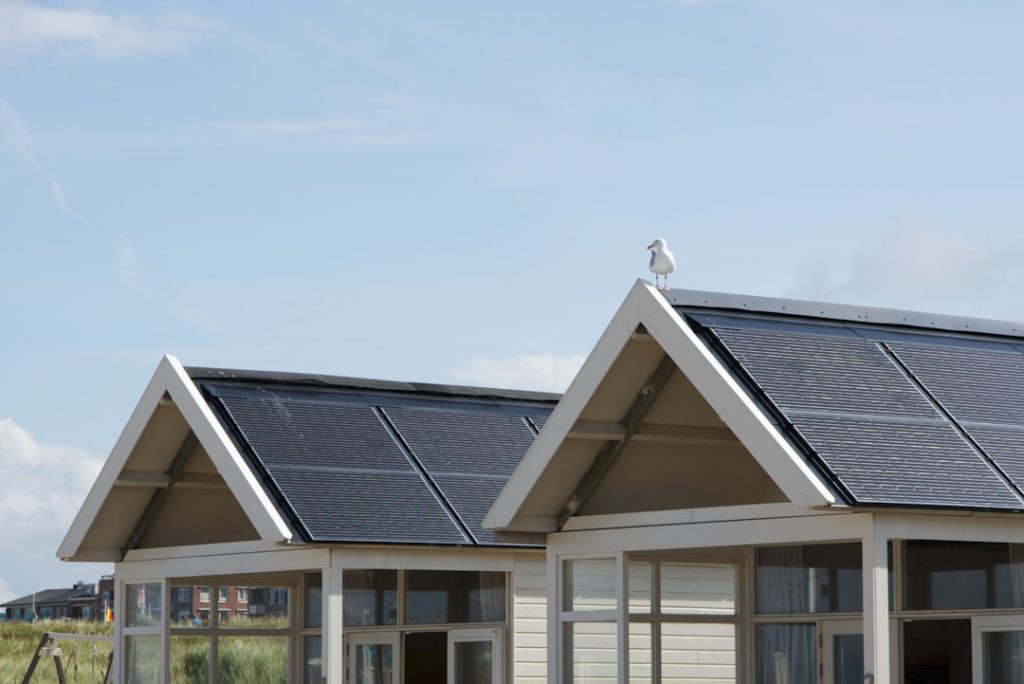Renewable energy integration in industries is of paramount importance in today’s world. As the global population continues to grow, the demand for energy is increasing at an unprecedented rate. Fossil fuels, which have been the primary source of energy for centuries, are not only finite but also harmful to the environment. The integration of renewable energy sources such as solar, wind, hydro, and geothermal power into industrial processes is crucial for reducing carbon emissions and mitigating the impact of climate change. By transitioning to renewable energy, industries can significantly reduce their carbon footprint and contribute to a more sustainable future.
Furthermore, integrating renewable energy into industries can lead to energy independence and security. Unlike fossil fuels, which are subject to price fluctuations and geopolitical tensions, renewable energy sources are abundant and widely distributed. By harnessing the power of the sun, wind, and water, industries can reduce their reliance on imported energy sources and stabilize their energy costs. This not only enhances the resilience of industrial operations but also contributes to the overall stability of the energy market. Additionally, renewable energy integration can create new job opportunities and stimulate economic growth, particularly in regions with abundant renewable resources. Overall, the importance of renewable energy integration in industries cannot be overstated, as it is essential for environmental sustainability, energy security, and economic development.
Advantages and Benefits of Renewable Energy Integration
The integration of renewable energy into industries offers a multitude of advantages and benefits. One of the most significant advantages is the reduction of greenhouse gas emissions. Unlike fossil fuels, which release carbon dioxide and other pollutants when burned, renewable energy sources produce minimal to no emissions during electricity generation. This not only helps combat climate change but also improves air quality and public health. Additionally, renewable energy integration can lead to cost savings for industries. While the initial investment in renewable energy infrastructure may be substantial, the operational costs are significantly lower than those of traditional energy sources. Solar panels, wind turbines, and hydroelectric plants have minimal fuel and maintenance costs, making them a cost-effective long-term solution for industrial energy needs.
Moreover, renewable energy integration can enhance the resilience and reliability of industrial operations. Unlike centralized fossil fuel power plants, renewable energy systems are often distributed and modular, reducing the risk of large-scale outages. This can be particularly beneficial for industries that require uninterrupted power supply, such as manufacturing facilities and data centers. Furthermore, integrating renewable energy can help industries meet sustainability goals and enhance their corporate image. Consumers and investors are increasingly demanding environmentally responsible practices from businesses, and embracing renewable energy can demonstrate a commitment to sustainability. Overall, the advantages and benefits of renewable energy integration in industries are vast, encompassing environmental, economic, and social aspects.
Challenges and Barriers to Renewable Energy Integration
Despite its numerous advantages, the integration of renewable energy into industries is not without its challenges and barriers. One of the primary challenges is the intermittency and variability of renewable energy sources. Unlike fossil fuel power plants, which can generate electricity consistently, renewable energy generation is dependent on weather conditions and natural cycles. This variability can pose challenges for industries that require a stable and reliable power supply. Additionally, the integration of renewable energy may require significant upfront investment and infrastructure upgrades. Industries may need to invest in new technologies, equipment, and grid interconnections to accommodate renewable energy sources, which can be a barrier for some businesses, particularly small and medium-sized enterprises.
Furthermore, regulatory and policy barriers can hinder the widespread adoption of renewable energy in industries. In some regions, outdated regulations and policies may favor traditional energy sources or impose barriers to grid connection for renewable energy systems. Additionally, lack of access to financing and technical expertise can be a barrier for industries looking to integrate renewable energy. Many businesses may lack the knowledge and resources to navigate the complexities of renewable energy projects, leading to inertia in adoption. Finally, public perception and resistance to change can also present a barrier to renewable energy integration in industries. Some stakeholders may be skeptical of new technologies or perceive renewable energy as unreliable or costly. Overcoming these challenges and barriers will require concerted efforts from governments, industry stakeholders, and the broader community to create an enabling environment for renewable energy integration.
Successful Case Studies of Renewable Energy Integration in Industries
| Industry | Renewable Energy Source | Integration Method | Impact |
|---|---|---|---|
| Manufacturing | Solar | On-site solar panels | Reduced electricity costs and carbon emissions |
| Food Processing | Biogas | Utilizing waste to produce biogas | Lowered energy expenses and waste management costs |
| Automotive | Wind | On-site wind turbines | Supplemented energy needs and reduced reliance on grid power |
Several industries have successfully integrated renewable energy into their operations, demonstrating the feasibility and benefits of such initiatives. One notable case is that of Google, which has committed to powering all its operations with 100% renewable energy. The tech giant has invested in large-scale wind and solar projects around the world and has implemented innovative strategies to integrate renewable energy into its data centers and offices. By leveraging power purchase agreements (PPAs) and investing in renewable energy certificates (RECs), Google has demonstrated that large corporations can lead the way in renewable energy integration.
Another successful case study is that of IKEA, which has made significant investments in solar and wind power to power its global operations. The furniture retailer has installed solar panels on its stores and distribution centers and has invested in wind farms to offset its electricity consumption. By embracing renewable energy integration, IKEA has not only reduced its environmental impact but also achieved cost savings and enhanced its brand reputation as a sustainability leader.
Furthermore, the manufacturing industry has seen successful examples of renewable energy integration. Companies such as General Motors and BMW have invested in onsite solar arrays and wind turbines to power their production facilities. These initiatives have not only reduced carbon emissions but also provided long-term cost savings for these companies. Overall, these successful case studies demonstrate that renewable energy integration is not only feasible but also beneficial for industries across various sectors.
Government Policies and Incentives for Renewable Energy Integration
Government policies and incentives play a crucial role in facilitating the integration of renewable energy into industries. Many governments around the world have implemented supportive policies to promote renewable energy deployment, such as feed-in tariffs, tax incentives, grants, and rebates for renewable energy projects. These incentives can help offset the initial investment costs and make renewable energy more financially attractive for industries. Additionally, regulatory frameworks that prioritize renewable energy integration into the grid can create an enabling environment for businesses to invest in clean energy technologies.
Furthermore, government-led initiatives to promote research and development in renewable energy technologies can drive innovation and cost reductions in the sector. By funding research programs and providing support for technology demonstration projects, governments can accelerate the deployment of advanced renewable energy solutions for industrial applications. Moreover, setting ambitious renewable energy targets and implementing supportive regulations can create market certainty and drive investment in the sector.
Additionally, governments can play a role in facilitating access to financing for renewable energy projects through public-private partnerships and green investment funds. By providing low-interest loans or guarantees for renewable energy investments, governments can help overcome financial barriers for industries looking to integrate clean energy solutions.
Overall, government policies and incentives are essential for creating a conducive environment for renewable energy integration in industries, driving investment, innovation, and market transformation.
Technologies and Innovations for Effective Renewable Energy Integration

Technological advancements play a critical role in enabling effective integration of renewable energy into industries. One key innovation is the development of smart grid technologies that enable better management of variable renewable energy sources. Smart grids utilize advanced sensors, communication technologies, and control systems to optimize the integration of renewables into the grid, improve grid stability, and enable demand response programs. These technologies can help industries better manage their electricity consumption and integrate intermittent renewables such as solar and wind power.
Furthermore, advancements in energy storage technologies are crucial for overcoming the intermittency of renewable energy sources. Battery storage systems, pumped hydro storage, and other emerging storage technologies can store excess renewable energy during periods of high generation and discharge it when needed, providing a reliable source of power for industrial operations.
Moreover, innovations in distributed generation technologies such as microgrids and combined heat and power (CHP) systems can enable industries to generate their own clean electricity on-site using renewable sources. These technologies offer greater resilience and reliability for industrial operations while reducing reliance on centralized grid infrastructure.
Additionally, digitalization and data analytics technologies can enable industries to optimize their energy usage and integrate renewables more effectively. Advanced monitoring systems and predictive analytics can help businesses better understand their energy consumption patterns and optimize their operations for maximum efficiency.
Overall, technological innovations are essential for enabling effective integration of renewable energy into industries, providing solutions to overcome challenges such as intermittency and variability while enhancing operational efficiency.
Future Outlook and Potential for Renewable Energy Integration in Industries
The future outlook for renewable energy integration in industries is promising, with significant potential for growth and transformation. As technology continues to advance and costs continue to decline, renewables are becoming increasingly competitive with traditional fossil fuels. This trend is expected to drive greater adoption of renewables across various industrial sectors.
Furthermore, as awareness of climate change impacts grows and pressure to reduce carbon emissions intensifies, industries are increasingly recognizing the importance of transitioning to clean energy sources. This shift in mindset is likely to drive greater investment in renewable energy integration initiatives.
Moreover, as governments around the world continue to set ambitious targets for renewable energy deployment and implement supportive policies and incentives, industries will have greater motivation to embrace clean energy solutions. In addition, advancements in digitalization and smart grid technologies are expected to enable more effective integration of renewables into industrial operations while enhancing grid stability and reliability.
Overall, the potential for renewable energy integration in industries is vast, with opportunities for cost savings, environmental stewardship, and enhanced operational resilience. With continued innovation, supportive policies, and collaborative efforts from governments, industry stakeholders, and technology providers, the future holds great promise for widespread adoption of renewables in industrial settings. This transition to renewable energy sources not only benefits the environment but also provides long-term economic advantages for industries by reducing reliance on fossil fuels and mitigating the impact of energy price volatility.
Additionally, integrating renewables into industrial operations can enhance corporate sustainability efforts and improve brand reputation, as consumers and investors increasingly prioritize environmentally responsible practices. As technology continues to advance and costs decrease, the business case for renewable energy in industries becomes even more compelling.
FAQs
What is renewable energy integration in industries?
Renewable energy integration in industries refers to the process of incorporating renewable energy sources, such as solar, wind, hydro, and biomass, into the energy supply for industrial operations.
Why is renewable energy integration important for industries?
Renewable energy integration is important for industries because it can help reduce greenhouse gas emissions, lower energy costs, and enhance energy security. It also allows industries to demonstrate their commitment to sustainability and corporate social responsibility.
What are the benefits of renewable energy integration in industries?
The benefits of renewable energy integration in industries include reduced operating costs, decreased reliance on fossil fuels, improved energy efficiency, and a positive impact on the environment. It can also lead to a more stable and reliable energy supply.
What are some common renewable energy technologies used in industrial settings?
Common renewable energy technologies used in industrial settings include solar photovoltaic systems, wind turbines, biomass boilers, and hydroelectric generators. These technologies can be integrated into existing industrial infrastructure to provide clean and sustainable energy.
What are the challenges of integrating renewable energy into industries?
Challenges of integrating renewable energy into industries include high initial investment costs, intermittency of renewable energy sources, and the need for energy storage solutions. Additionally, regulatory and policy barriers can also pose challenges for renewable energy integration in industries.
How can industries overcome the challenges of renewable energy integration?
Industries can overcome the challenges of renewable energy integration by investing in energy storage technologies, implementing energy management systems, and collaborating with renewable energy providers and government agencies. Additionally, supportive policies and incentives can help facilitate the integration of renewable energy into industrial operations.



